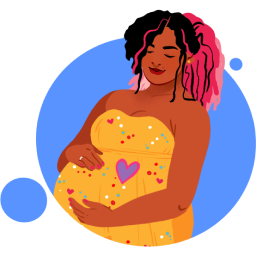I want my children to engage in a world that’s inclusive and respectful, but jumping on every teachable moment can make things incredibly complicated. Here are the times I tried to give the “right” answer and instead screwed up the entire lesson.
RELATED: THIS Is How You Teach Your Kids About White Privilege
- My 5-year-old son wandered out of bed while my husband and I were watching a movie. We let him sit with us for a few minutes and I pointed out that one of the characters on the screen had the same name as him.
I realized I was being so careful not to make race a big deal that I wasn’t even letting my son say the words out loud.
“The black guy?” he asked.
“I mean the guy on the right, in the blue shirt,” I said instantly, before slowing down to clarify, “We don’t identify people only by their race.”
“Why … Um, OK.”
What had started as a pretty banal conversation fell into awkward silence. I realized I was being so careful not to make race a big deal that I wasn’t even letting my son say the words out loud.
- I received a wedding invitation in the mail and, having never been to a wedding, my son asked what it was.
“It’s when a man and a woman … or, you know, it’s when two grownups who love each other want to spend their lives together.”
“Why?”
“So they can live together. I mean, people can live together without being married. But if they want to be together and have babies—er, not that you have to be married to have babies. But that’s how mommy and daddy did it.”
He left the room to go play and I stood there like an idiot, still holding the invitation in my hand.
- I’ve succeeded in convincing him that boys can like rainbows and that pink isn't only for girls, but the one area I can’t crack is superhero reality. He always plays Batman and Superman while I'm always Batgirl or Catwoman. Every. Single. Time.
Whenever he dictates which character I have to be, I sometimes explain that girls can also pretend to be The Flash, or I point out that Black Widow is as equally powerful as her male counterparts. Mostly we just run around pretending to chase bad guys, and I feebly try to explain that they’re not necessarily bad, but probably had a rough childhood.
- Dr. Seuss Week really threw me for a loop. Crazy Hair Day is a thing, and we both got the giggles sculpting his short little locks into sticky-uppy spikes. But I also attempted to explain to a then-4-year-old that “crazy” is ableist language that marginalizes the mentally ill. I considered leading a household or school-wide campaign to rename it “Silly Hair Day,” but decided to save my breath. For once.
RELATED: Lego Responds to 7-Year-Old's Letter About Sexism
- This one hasn't happened yet, but I’m legit stressed about when I introduce my kids to my beloved “Little House” series. For me, these life-shaping books were simple stories of a spirited girl and her coming of age in the hardy American pioneer days. In reality, they’re fraught with the darkness of colonialism, racism and genocide. But understanding that took years of reading and re-reading the stories from different perspectives. Do I open the door to that conversation from the start, or let them discover the same realities the same ways I did? Or maybe I’ll just force-feed them “Anne of Green Gables” instead.




